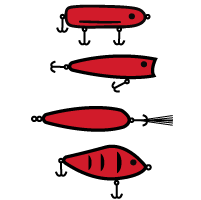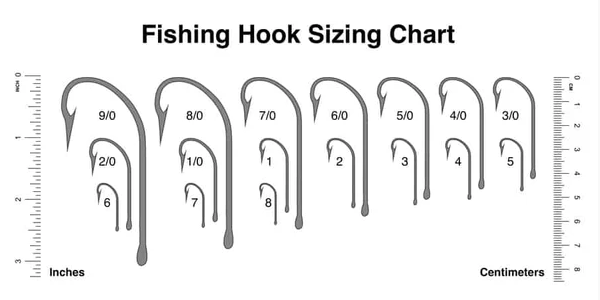
Treble Hook Lures
Treble hook lures have hooks of varying sizes from smaller treble hooks for example on a spybait to larger treble hooks for example on a glide bait.

Soft Bait Lures
Typically have a smaller single hook, but not always.

Skirted Lures
Generally have a larger single hook.



